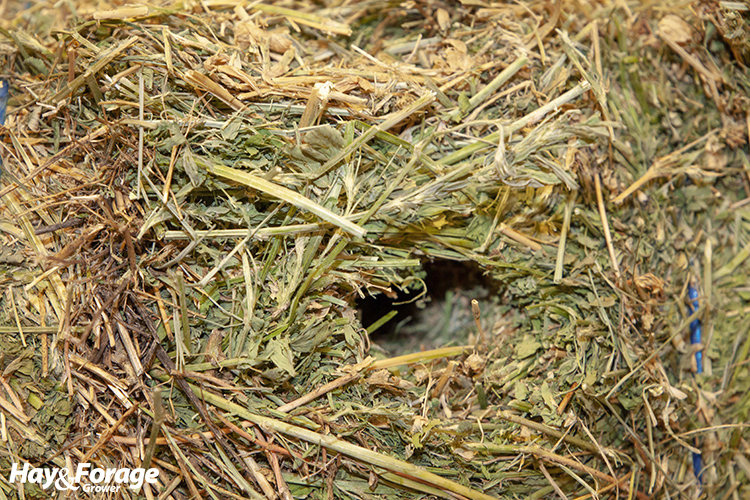
Let’s face it — cutting and baling hay is an enjoyable undertaking for most people in the hay business. The same is true for seeing a new stand of alfalfa (or whatever) successfully establish. Then there’s the smell of wilting forage in the early evening as you drive by — a reason alone to be in the hay business.
What isn’t always fun is getting a representative forage sample, although this exercise is foundational to our industry for being able to accurately formulate livestock rations and determine economic value. I know of few people who wake up in the morning and say to themselves, “What a great day this is going to be. I get to pull forage samples!”
The end goal of sampling forage is daunting when you think about it. We’re trying to represent tons of hay within the confines of a sandwich bag. Then, the forage testing lab has to represent our sandwich bag. This is a key reality: Our job is to represent tons; their job is to represent a sandwich bag of forage. Who has the more difficult task?
It’s not surprising to realize that research has shown probe-to-probe variation of a hay lot is much greater than the variation found within an individual testing lab and between different testing labs.
Whether pulling forage samples is an act of random number generation or one of meaningful metrics that truly represent the moisture and forage quality of the hay being sampled is entirely up to the sampler and his or her approach.
We can never eliminate sampling variation, but we can control it. That’s accomplished by following a research-proven set of protocols set forth by the National Forage Testing Association (NFTA). If you want to screw up your forage test results, feel free to deviate from this protocol. By doing so, sampling will take less time, cost less money, and might even make the task more palatable. What it won’t do is offer the right results.
So, if screwing up a forage sample is your goal, then DO NOT follow these proven techniques:
1. Identify and sample only a single lot of hay: An individual hay lot is comprised of a single cutting and a single field, baled within a 48-hour period. The maximum amount of hay in a single lot should be 200 tons or less, preferably much less.
2. Sample close to the point of sale or feeding. Although testing right after harvest isn’t a bad idea to offer a guide as to what is going into inventory, realize that moisture and, to a lesser degree, forage quality can change during storage.
3. Use a sharp, well-designed hay probe. The probe opening should be 3/8 to 3/4 inch and not slanted. Many excellent probes are available for purchase, but many inferior probes are available as well. Pick a good one, even if the initial cost is a little higher.
4. Take enough cores. This is often the biggest mistake that is made. Research shows that you need at least 20 cores, perhaps more, for extremely variable or larger lots. It’s the core number that helps reduce variation. Taking only a few probes will almost always yield misleading results.
5. Take random samples. Sample systematically and don’t eliminate bales. Although sometimes access is limited in a stack, at least 20 different bales still need to be randomly selected for probing.
6. Use proper technique. Angle the probe 90 degrees from the center of the butt end of the bale, inserting the shaft about 12 to 18 inches deep.
7. Take the right amount. A sample needs to be large enough to represent the lot, but not so large that the lab can’t or won’t grind the entire sample. Ideally, you don’t want the lab to subsample your submitted sample. The right size is about 250 grams or 1/2 pound.
8. Handle samples correctly. Seal or double-seal the sample in a ziplocked bag. Keep the sample cool and out of the sun, and submit it to the lab as soon as possible.
9. Choose a qualified lab. Ensure the lab you’re working with is certified by the NFTA. The NFTA sends forage-testing labs check samples, already finely ground, to address analytic accuracy.
So, there it is — a list of protocols you shouldn’t do if you desire erroneous results. However, if more precision is the end game, then I’d suggest you take heed and follow these guidelines. Also, spend some time on the NFTA website. There you will find a wealth of information on forage sampling, available sampling probes, and many other resources. You can also easily become a Certified Hay Sampler by taking an online test. There is no cost for the certification.

